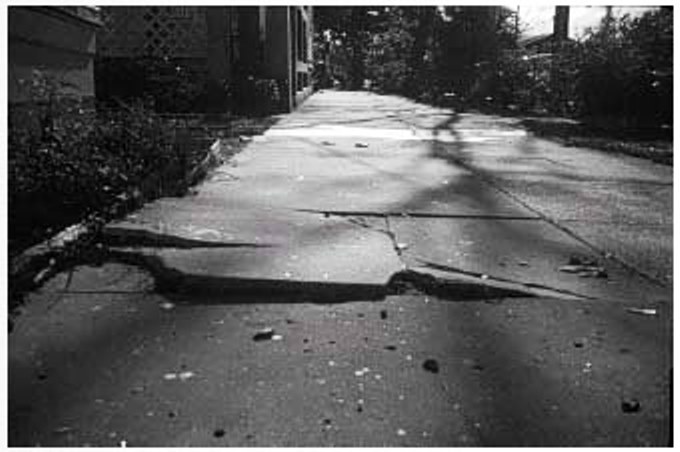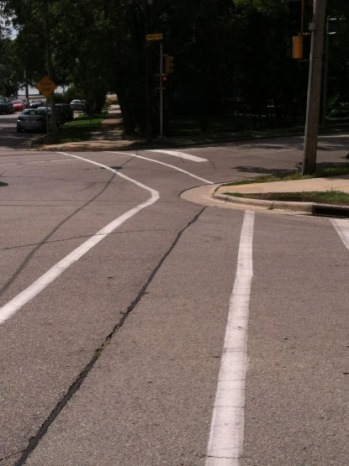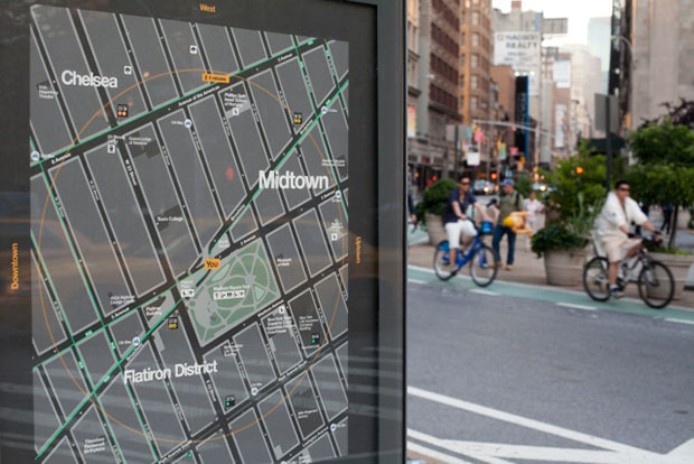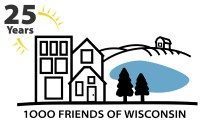Communities and neighborhoods that are more compact and walkable have stronger social networks, better personal and community health, and are easier on the environment. But are “walkable” streets equally walkable for everyone?

Communities seeking to become more walkable often concentrate (and rightly so) on things like architecture, mixed-use development, and wider sidewalks. People with disabilities, however, face unique challenges in trying to navigate public spaces, issues that are not as well understood or acted upon. In fact, only one out of three instruments or indices that measure walkability, bikeability, or recreation include disability-specific items.¹
The Americans with Disabilities Act (ADA) of 1990 provides, among many other facets, that places of public accommodation (including businesses and public services) and state and local governments that build and maintain public spaces must meet specific standards of accessibility for people with physical and/or mental disabilities.2 Since that act, public spaces have become considerably more accommodating to people with disabilities. Despite this progress, challenges remain, and any discussion about making a street, neighborhood, or community more walkable is incomplete if it does not engage people with disabilities.
For example, people with different disabilities experience public space in very different ways that may call for different remedies. For example, a person who requires crutches, a cane, or a walker to get around will face challenges in winter weather that differ substantially from those a person in a wheelchair might face. Similarly, a sight-impaired person may have more trouble with certain crosswalk and intersection designs than a person with good sight who uses a wheelchair.
 This intersection (right), south of the state capitol in Madison, typifies such challenges. While the curb cuts pictured meet standards of accessibility for people in wheelchairs, for example, the placement of the curb cut compared to the crosswalk angle could make for a confusing access for a sight-impaired person.
This intersection (right), south of the state capitol in Madison, typifies such challenges. While the curb cuts pictured meet standards of accessibility for people in wheelchairs, for example, the placement of the curb cut compared to the crosswalk angle could make for a confusing access for a sight-impaired person.
Pedestrian crossings at this intersection, although marked, are also much longer than most in downtown due to the angle. This could prove problematic for any pedestrians who move slower, whether disabled or not.
Indeed, this scenario is not mere conjecture but has been proven in observation. In an engineering study of roundabout intersections, researchers discovered that blind pedestrians waited three times longer to cross the street and made more dangerous crossings on average than sighted pedestrians.3
Wayfinding can be a challenge for any pedestrian, even in our most walkable communities. Vision-impaired pedestrians face additional challenges that must be accounted for to a greater degree. It is true that there have been advancements in the field—for example, crosswalks that announce the intersection name when the pedestrian walk signal goes on and speakers on buses and in bus stops that announce which bus is approaching or loading have helped address these challenges.4 However, an overall lack of good street maps in public spaces and the inability of vison-impaired people to use visual landmarks and indicators in the same way as those of us without those impairments are an ongoing issue in communities nationwide.

Because walkability is such a desirable characteristic for neighborhoods and communities, now is the time to consider how to improve public spaces for people with disabilities. Walkability studies and audits done by communities, advocates, and nonprofits must consciously seek out these perspectives. Experiencing public space at eye level is a great shared experience, but every single person experiences the specifics of the built environment in a slightly different way. Only by including people who see our public spaces differently than we do can we ensure that we build and design communities more inclusively.
-Matt Covert, Green Downtown Program Manager
Sources
1. Gray, Zimmerman, and Rimmer. (2012) “Built environment instruments for walkability, bikeability, and recreation: disability and universal design relevant?” Disability & Health Journal, 5(2): 87-101.
2. Americans with Disabilities Act Title II Regulations. (2010) https://www.ada.gov/regs2010/titleII_2010/titleII_2010_regulations.htm#a35130
3. Ashmead, Guth, Wall, Lang, and Ponchillia. (2005) “Street Crossing by Sighted & Blind Pedestrians at a Modern Roundabout.” Journal of Transportation Engineering, 131(11): 812-821.
4. Barlow and Franck. (2013) “Accessible Pedestrian Signals (APS).” American Council of the Blind. https://acb.org/node/617
